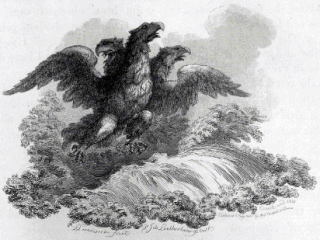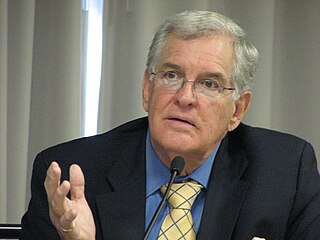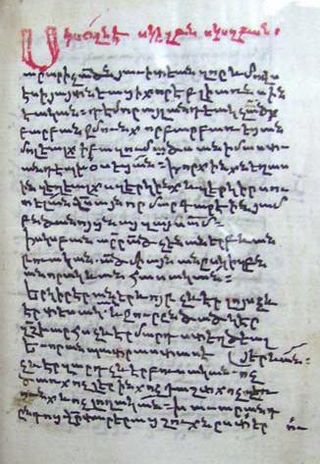
The Book of Jubilees, sometimes called Lesser Genesis (Leptogenesis), is an ancient Jewish apocryphal text of 50 chapters, considered canonical by the Ethiopian Orthodox Tewahedo Church as well as Ethiopian Jews, where it is known as the Book of Division. Jubilees is considered one of the pseudepigrapha by the Catholic, Eastern Orthodox, and Protestant Churches. It is also not considered canonical within Judaism outside of Beta Israel.

Pseudepigrapha are falsely attributed works, texts whose claimed author is not the true author, or a work whose real author attributed it to a figure of the past. The name of the author to whom the work is falsely attributed is often prefixed with the particle "pseudo-", such as for example "pseudo-Aristotle" or "pseudo-Dionysius": these terms refer to the anonymous authors of works falsely attributed to Aristotle and Dionysius the Areopagite, respectively.
The Life of Adam and Eve, also known in its Greek version as the Apocalypse of Moses, is a Jewish apocryphal group of writings. It recounts the lives of Adam and Eve from after their expulsion from the Garden of Eden to their deaths. It provides more detail about the Fall of Man, including Eve's version of the story. Satan explains that he rebelled when God commanded him to bow down to Adam. After Adam dies, he and all his descendants are promised a resurrection.
Pseudo-Philo is the name commonly used for the unknown, anonymous author of Biblical Antiquities. This text is also commonly known today under the Latin title Liber Antiquitatum Biblicarum, a title that is not found on the Latin manuscripts of Pseudo-Philo's Biblical Antiquities. Pseudo-Philo's Biblical Antiquities is preserved today in 18 complete and 3 fragmentary Latin manuscripts that date between the eleventh and fifteenth centuries CE. In addition, portions of Pseudo-Philo's Biblical Antiquities parallel material also found in the Chronicles of Jerahmeel, a 14th-century Hebrew composition. The Latin text of Pseudo-Philo's Biblical Antiquities circulated in some Latin collections of writings by Philo of Alexandria. Scholars have long recognized the pseudonymous character of the text now known as the Biblical Antiquities. Primary in this regard is a vastly differing approach to and use of the Jewish Scriptures than that of Philo of Alexandria. For the sake of convenience and due to the lack of a better option, scholars continue to follow the lead of Philo scholar Leopold Cohn in calling the author “Pseudo-Philo.”

2 Esdras is an apocalyptic book in some English versions of the Bible. Tradition ascribes it to Ezra, a scribe and priest of the fifth century BC, but scholarship places its composition between 70 and 218 AD.
Harold William Attridge is an American New Testament scholar and historian of Christianity known for his work in New Testament exegesis, especially the Epistle to the Hebrews, the study of Hellenistic Judaism, and the history of early Christianity. He is a Sterling Professor of Divinity at Yale University, where he served as Dean of the Divinity School from 2002 to 2012, the first Roman Catholic to head that historically Protestant school.
The Jewish apocrypha are books written in large part by Jews, especially during the Second Temple period, not accepted as sacred manuscripts when the Hebrew Bible was canonized. Some of these books are considered sacred by most Christians, and are included in their versions of the Old Testament. The Jewish apocrypha is distinctive from the New Testament apocrypha and biblical apocrypha as it is the only one of these collections which works within a Jewish theological framework.

James Hamilton Charlesworth is an American academic who served as the George L. Collord Professor of New Testament Language and Literature until January 17, 2019, and Director of the Dead Sea Scrolls Project at the Princeton Theological Seminary. His research interests include the Apocrypha and Pseudepigrapha of the Hebrew and Christian Bibles, the Dead Sea Scrolls, Josephus, the Historical Jesus, the Gospel of John, and the Book of Revelation.

Robert A. Kraft was an American religious historian who was the Berg Professor of Religious Studies Emeritus at the University of Pennsylvania. He is known for his pioneering work in the application of computing to the study of ancient literature and for his significant contributions to the study of early Judaism and early Christianity. Kraft was president of the Society of Biblical Literature in 2006.
Jonas Carl Greenfield was an American scholar of Semitic languages, who published in the fields of Semitic Epigraphy, Aramaic Studies and Qumran Studies, and a distinguished member of the Israel Academy of Sciences and Humanities.
Loren T. Stuckenbruck is a historian of early Christianity and Second Temple Judaism, currently professor of New Testament at the University of Munich, in Germany. His work has exerted a significant impact on the field.
A biblical canon is a set of texts which a particular Jewish or Christian religious community regards as part of the Bible.
Eileen Marie Schuller is a professor at the Faculty of Social Sciences at McMaster University in Hamilton, Ontario. Schuller is an official editor of the Dead Sea Scrolls. She teaches undergraduate and graduate studies in the Biblical field. Over a span of 30 years, her involvement in the publication of the Dead Sea Scrolls has led to numerous contributions in authenticating the discoveries found in the caves near the Ancient Qumran settlement.
Matthias Henze is the Isla Carroll and Perry E. Turner Professor of Hebrew Bible and Early Judaism at Rice University in Houston, Texas.
Carl Roark Holladay is an American scholar of New Testament, Christian origins, and Hellenistic Judaism. He is the Charles Howard Candler Professor Emeritus of New Testament at Emory University's Candler School of Theology and an Elected Fellow of the American Academy of Arts and Sciences.
Angela Kim Harkins is a Professor of New Testament and Professor Ordinaria at Boston College School of Theology and Ministry.
Hanna Tervanotko is a Finnish-born Canadian historian of religion. She is an assistant professor in the Department of Religious Studies at McMaster University in Ontario, Canada. Her research focuses on the Second Temple era and her research interests include women in antiquity, Qumran, Dead Sea Scrolls, and Jewish interpretation of scripture. She is affiliated with the Centre of Excellence "Changes in Sacred Texts and Traditions" (CSTT) at the University of Helsinki.
Kristin Mimi Lieve Leen De Troyer is an Old Testament scholar, theologian, writer and an (honorary) professor who has taught at different universities such as the University of Salzburg, the University of St Andrews, and Claremont School of Theology. She is the author of many scholarly books and articles, an editor of several academic series, and a professor and researcher of the Hebrew Bible, the Septuagint, Judaism and the Dead Sea Scrolls. Since the beginning of 2021, she serves as the Secretary of the European Academy of Sciences and Arts.

Yovhannēs Tʻlkurancʻi was an Armenian poet who noted for his religious and lyric poetry.

Charlotte Hempel is a scholar of the Dead Sea Scrolls and the Hebrew Bible/Old Testament.







